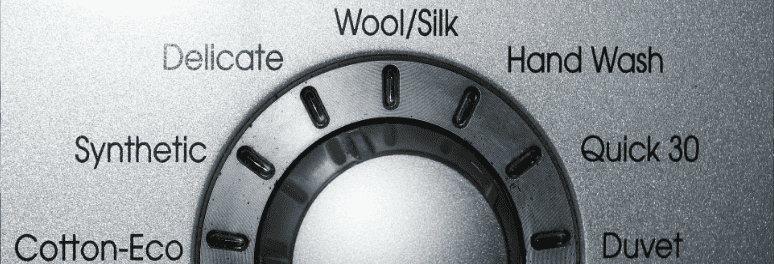
At some point in our lives, some of us will experience a problem with our washing machines. However many of these problems can be easily resolved by trying a few simple trouble-shooting solutions and having the basic knowledge on how to repair your domestic appliances. Here at Mix Repairs, we are aware that a small fault could potentially ruin your clothes and wreck a pricey laundry appliance.
Reliable Washing Machine Repairs in North London
To prevent this from happening to you, we have compiled a list of the 5 most common washing machine problems and a few self-help tips which could save you time, money and stress.
The washing machine won’t turn on
Trouble-shooting tips:
- Check that the washing machine is plugged in and switched on at the mains wall. Try another power socket to be sure.
- Make sure the plastic coating on the washing machine’s main power cable is not scratched or exposing any wires. If this happens, then the electric current will be obstructed causing loss of power.
- Check that there has not been a power failure at your home address.
- Turn the power off to reset the machine and wait at least 60 seconds before turning it back on again.
The washing machine stops working mid-cycle
Trouble-shooting tips:
- Check for an error message on the machine’s front screen panel. If there is an error message then call for technical support from the manufacturer, which can be found in the machine’s instruction manual.
- It may mean that your timer malfunctioned or stalled. You can take the control panel off and look inside for scorching or corrosion.
- The cycle may have been paused. If this happens, the ‘Start/Pause’ button will be flashing or lit up. Just press it again to get the machine up and running again.
- A build-up of detergent suds can cause this problem. Check that you are using a front- loader-specific detergent. The wash cycle will restart when the suds have dissolved.
The washing machine isn’t draining
Trouble-shooting tips:
- Check the drainage hose for any kinks. The lint filter or drain hose may also be blocked so make sure they are clear.
- Always ensure that the drainage hose is above the level of water in the drain tub. The drainage hose should not be more than 1200mm above floor level. If it is, lower it and try another cycle.
- For most standard washing machines, the pump may be blocked or jammed. Drain out the tub and remove the hoses. If this doesn’t work then you may need to replace it completely.

The washing machine is producing smelly odours
With all the dust and muck that it has to clean, washing machines do get dirty and mouldy. This, in turn, produces some horrible odours in your clothes.
Trouble-shooting tips:
- Clean the washing machine by running a cycle while the machine is empty. This allows the water and cleaning solution to run through the most difficult of spaces.
- Bleach is a strong and powerful sanitiser, as well as removing stain-causing rust.
- Use de-scaler or soda crystals to remove limescale residue. However be very careful with the amount you use.
- Use a cup of vinegar mixed with a cup of fresh lemon or lime juice to sanitise and get rid of any awful smells.
Call 0203 7737 520 today for affordable washing machine repair!
Laundry is still dirty at the end of the cycle
Trouble-shooting tips:
- Check that you’re using the correct wash cycle for your laundry.
- Check you’re using the correct amount of detergent for the level of soiling and the hardness of the water.
- Try not to overfill the washing machine.
Other common washing machine problems include:
The washing machine is leaking from the bottom
Why is water leaking from the bottom of my washing machine? See below…
Troubleshooting tips:
- Check for a loose or missing hose clamp as a loose connection can cause your washing machine leaking from the bottom. Tighten all connections and replace any missing parts.
- When your washing machine is leaking underneath, especially during the rinse cycle, this could be due to a damaged or faulty drum seal. You can replace loose seals that may be leaking from the supply hose.
- Inspect the water hose connections for moisture, and if hose washers are faulty they will need replacing. Turn off the water, remove the hoses, and replace any defective washers with new ones and reconnect.
- A blocked filter will typically result in a leak so check and clean the lint filter. You’ll need to open the cover to expose the filter and turn it anti-clockwise to pull it out. Remove any dirt and debris, rinse under the tap, and replace and secure by turning it clockwise and closing the cover.
- If you notice rumbling noises and shaking during the wash cycle this generally indicates that the water pump is faulty. This component is located at the bottom of your washing machine and has two large hoses connected to it. If the pump is obstructed or damaged you may need to be replaced.
- Check the coupler located between the motor and the drum of your washing machine. This rubber or plastic seal is designed to break in the event of your appliance malfunctioning so this is also a likely culprit of your front-loading washing machine leaking from the bottom.
The washing machine is leaking from bottom left
Troubleshooting tips:
- Unplug the washing machine from the power outlet and slide the washing machine out.
- Hand-tighten the connections on the water hoses with the hot and cold water outlets on the wall, and both waster hoses connected to your washing machine.
- See if the water supply connection is loose and if it is tighten the nut.
The washing machine is leaking from bottom right
Troubleshooting tips:
- Check your washing machine’s balance.
- Try rocking your appliance from side to side to determine if the feet of the washing machine are uneven.
- You can use a spirit level to see whether the level is off and you may be able to adjust the feet.
- By loosening the lock nuts you can turn them clockwise or anti-clockwise until the feet are firmly in contact with the floor, then tighten them accordingly.
Washing machine error codes
Washing machine fault codes will display when your appliance is experiencing operating difficulties. The error code indicates a technical fault and to prevent any further damage your washing machine will either fail or stop the wash cycle.
These diagnostic tools that trigger the error code can help to identify what the problem is and are very useful in that they immediately let you know that there is an issue, but won’t tell you what exactly is the cause.
Error codes can be displayed in many ways with the most common being a sequence of letters and numbers. How your particular error codes are displayed will depend on the brand and type of your washing machine and there will be a section in your instruction manual outlining how your error code system works.
Looking for washing machine repairs in London?
Domestic appliance repair specialists will quickly and effectively diagnose any faults with your appliance and fix them for you. Your washing machine repair will be carried out by fully trained and qualified technicians providing you with a comprehensive service from start to finish. You’ll be able to get a quick quote upfront and won’t have to pay a call-out fee. And you’ll get a six-months guarantee on any repairs that are completed.



